INTRODUCTION TO HOW TO READ YOUR OWN BODY COMPOSITION REPORT:
READING YOUR OWN BODY COMPOSITION REPORT CAN HELP YOU TO MAINTAIN A HEALTHY LIFE.
What do you know about your own body composition did it is healthy or not, everyone should be known about their healthy weight, BMR, BMI, TBF%, VFI%, SMI%, BMC% and many more…
f they are in the healthy range so good just you need to maintain it if it’s not then you must need to meet a dietitian or doctor and have to follow their instruction:
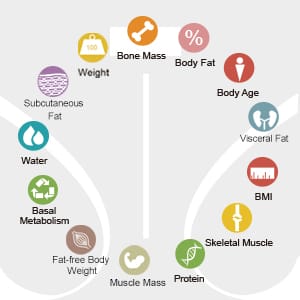


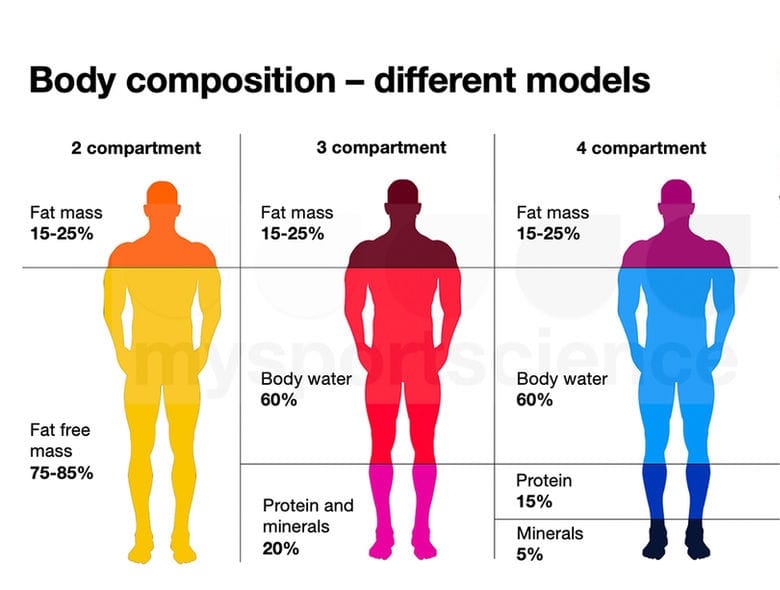

WEIGHT:
It is a fact that men generally weigh more than women of the same height and age. Ideal body weight; do you know what actually the ideal body weight is; it is essential to know about your ideal weight, it depends on your age and height for the same age or height it’s different for men and women.
If you can maintain your ideal weight according to your age and height then you can keep yourself healthy. and save yourself from many diseases.
Calculating Your Ideal Body Weight Based on Height :
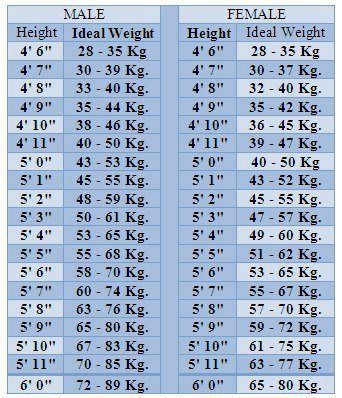
BMI (BODY MASS INDEX ) :
The Body Mass Index (BMI) is calculated by dividing a person’s weight by the square of their height. This value is expressed in units of kg/m2, with weight in kilograms and height in meters. You can calculate your BMI by referring to a table or chart that shows your BMI based on your weight and height. These charts use contour lines or colours to represent different BMI categories and may use different units of measurement (which will be converted to metric units for the calculation).
The BMI is expressed in kg/m2, resulting from mass in kilograms and height in metres. If pounds and inches are used, a conversion factor of 703 (kg/m2)/(lb/in2) is applied. When the term BMI is used informally, the units are usually omitted.BMI=masskgheightm2=masslbheightin2×703
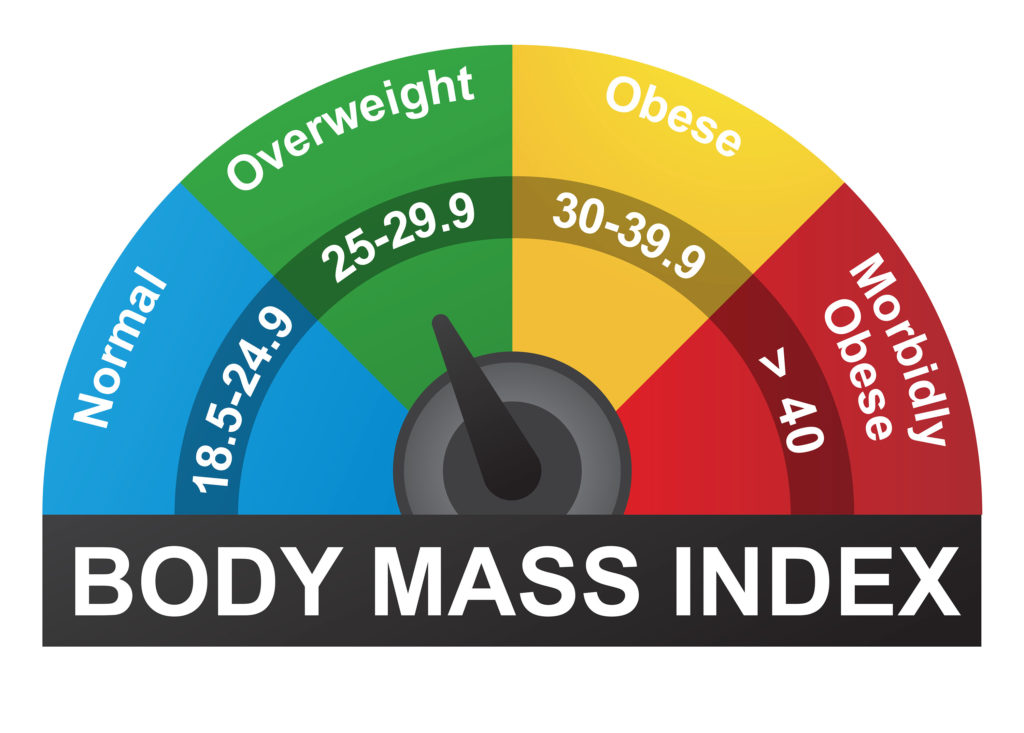
The Body Mass Index, or BMI, is measured by calculating the ratio of a person’s weight in kilograms to their height in meters squared. If the weight is measured in pounds and the height in inches, a conversion factor of 703 (kg/m2)/(lb/in2) is used. When referring to BMI informally, the units are often left out. To calculate BMI, the formula is BMI = mass (kg) / height (m)2 or BMI = mass (lb) / height (in)2 x 703.
FAT:
Did you know that fats, also known as fatty acids or lipids, in our body consist of three molecules that are bonded together? This specific structure is referred to as a “triglyceride”
Our bodies can produce most of the fat required, but there are certain fats that are not produced by our bodies. These fats are known as “essential” fats and can only be obtained by consuming them through food. Some examples of essential fats are Omega-3 fats (present in foods like fish and flaxseed) and Omega-6 fats (present in foods like nuts, seeds, and corn oil). Obtaining these fats from food is crucial for our overall health and well-being.


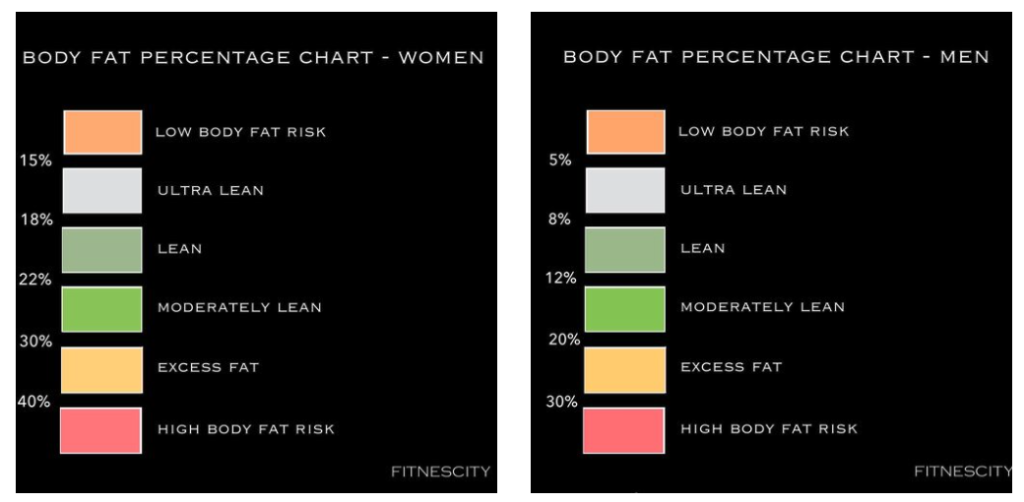
Calorie and fat intake recommendations for men :
- Recommended Daily Total Fat Intake: 60 – 65g*
- Recommended Maximum Daily Saturated Fat Intake: 14 – 15.5g**
- Daily Calories: 1800 – 2000
Calorie and fat intake recommendations for women :
- Daily Calories: 1500 – 1700
- Recommended Daily Total Fat Intake: 50 – 56g*
- Recommended Maximum Daily Saturated Fat Intake: 11.5 –
BODY FAT WEIGHT:
IT’S LIKELY DETERMINED THAT IF YOUR FAT PERCENTAGE DECREASES AND YOUR WEIGHT IS AS IT IS SAME THEN THAT’S OK. YOUR MUSCLE WEIGHT% SHOULD ALWAYS BE MORE THAN FAT %.

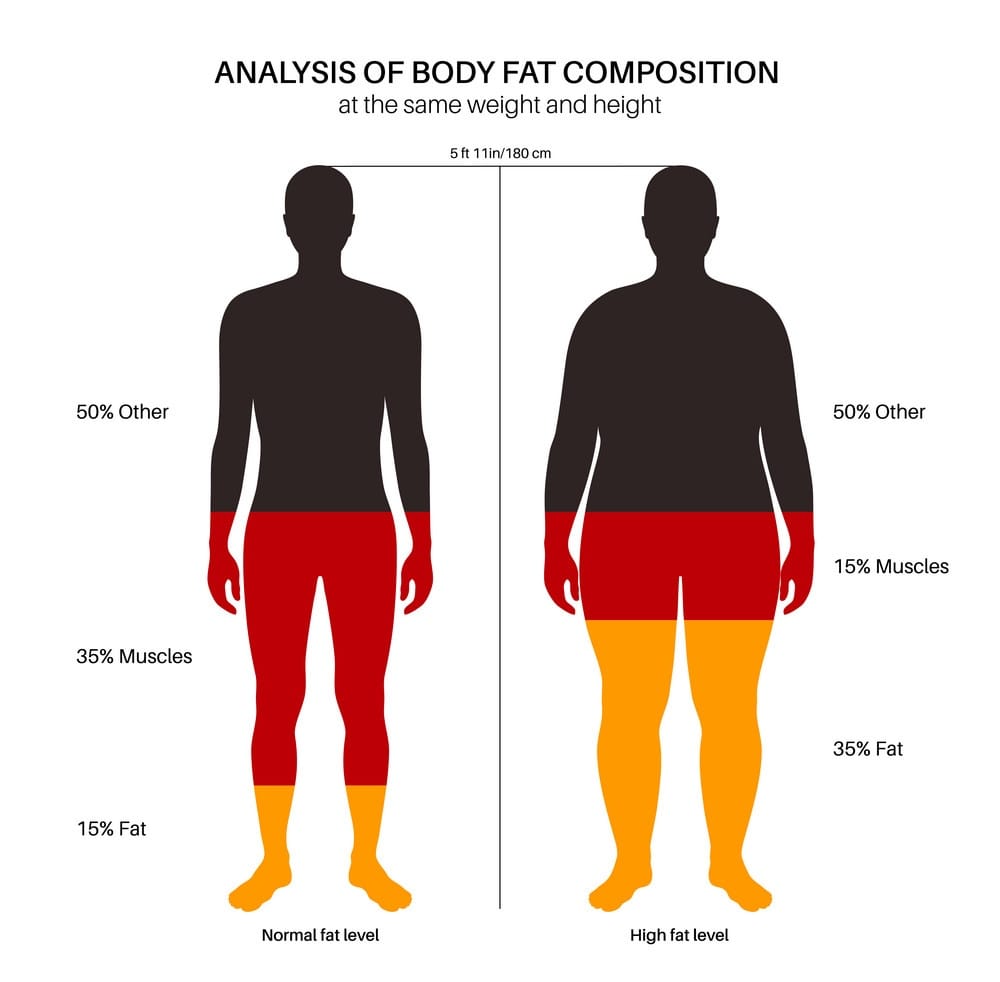
SKELETAL MUSCLE:
Most of the muscles in our body are skeletal muscles. It comprises 30 to 40% of total body mass. It’s connected to our bones and allows us to do movements and functions. It’s voluntary which means we can control how and when they work. Skeletal muscle refers to 35% of our body weight in females and in males it’s 36%. it also changes with height weight and age. It helps to maintain body posture, protect joints and hold them in place also helps in chewing and swallowing which is the first part of digestion.
DISORDERS AFFECT SKELETAL MUSCLES:
- MUSCULAR DYSTROPHY: This disease is caused by abnormal genes or comes genetically in skeletal muscle it causes progressive degeneration of skeletal muscle fibre.
- MYASTHENIA GRAVIS: it is an autoimmune disease that prevents muscles and nerves from communicating as they are.
- RHABDOMYOLYSIS: break down of muscle tissue it is a life-threatening disease in which the damaged muscle start releasing proteins, electrolytes and other substance in the blood. It can lead to serious organ damage, heart stroke.
- SARCOPENIA: in this, we start losing skeletal muscle mass as we age at 40 and by 80 we almost lose50%of it. it can lead to loss of function, mobility, and obesity.
- STRAINS: Because of over-stretching of muscle fibre.
- TENDONITIS: Tendons are responsible for connecting skeletal muscles to bones. Inflammation of tendons can cause significant pain and discomfort while using these muscles. Tendonitis, similar to strains, is often a result of overworking tendons.
symptoms if the skeletal muscle is not working properly:
- some part of the body’s movement stops working
- severe, sudden muscle pain or cramps.
- check your urine colour if it is very dark urine or low urine output.
- feeling very tired and weak.
How can I keep my skeletal muscles healthy:
- EAT NUTRITIOUS AND BALANCED DIET.
- MAINTAIN A HEALTHY BODY WEIGHT.
- STRETCHING AND WARMING UP YOUR MUSCLES BEFORE PHYSICAL ACTIVITY.
MUSCLE:
It is a specialised tissue that helps us to move and locomotion made up of muscle cells, consisting of several myofibrils.
Animal muscle is of three types
- Skeletal muscle
- Smooth muscles
- cardiac muscles

MUSCLE WEIGHT :
they have the quality to contract and relax and are essential for the movements of the human body. they contribute to 40 to 50% of the body weight.
WATER:
Water is crucial for all living beings. In certain organisms, water can make up to 90% of their body weight, while in human adults, it can account for up to 60% of their body…
As per Mitchell et al. (1945), the brain and heart consist of 73% water, while the lungs are approximately 83% water. The skin contains 64% water, whereas muscles and kidneys are 79%, and even the bones have some water content, i.e., 31%.
Every day, humans need to consume a specific amount of water to stay alive. The amount varies based on age, gender, and location. Typically, adult males require around 3 litres (3.2 quarts) of water per day, while adult females require about 2.2 litres (2.3 quarts) per day. It’s worth noting that not all of the water a person needs has to come from drinking liquids, as some of it is present in the food we eat.



VISCERAL FAT:
Visceral fat is a specific type of fat that accumulates in the abdominal cavity and can cause blockages in arteries. This can increase the risk of health issues like diabetes, prediabetes, and heart disease.
It is important to maintain a healthy amount of body fat, however, not all types of fat are the same.
A growing belly is the most obvious sign of visceral fat, but that can indicate subcutaneous fat as well. Some studies show if you have a potbelly — or are more “apple-shaped” than “pear-shaped” — you may have more visceral fat
- liver
- stomach
- intestines
It can also build up in the arteries.
If you have a growing belly, it may be a sign of visceral fat. However, it’s important to note that this could also indicate subcutaneous fat. All of us need a bit of internal belly fat, says Nutritional… you are pear-shaped; if your WHR is higher than 0.80, you’re apple-shaped.
However, an unhealthy diet that includes a lot of fatty foods and carbohydrates (such as sugars) and a sedentary lifestyle contribute to the accumulation of visceral fat.

IT CAN LEAD TO STROKE, HEART DISEASE, AND DIEBETES&HIGH CHOLESTEROL
METABOLISM:
Metabolism is the natural process through which our body converts food and drinks into energy. During this process, calories from food and drinks combine with oxygen to produce the necessary energy for the body.
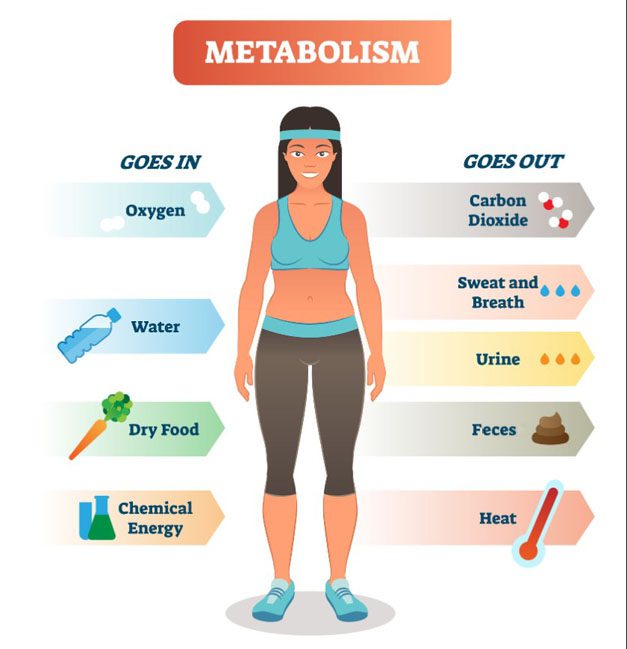
Even at rest, it needs energy for breathing, sending blood through the body, keeping hormone levels even and growing and repairing cells.
It depends on Body size and composition, sex, and age they all come under basal metabolic rate.


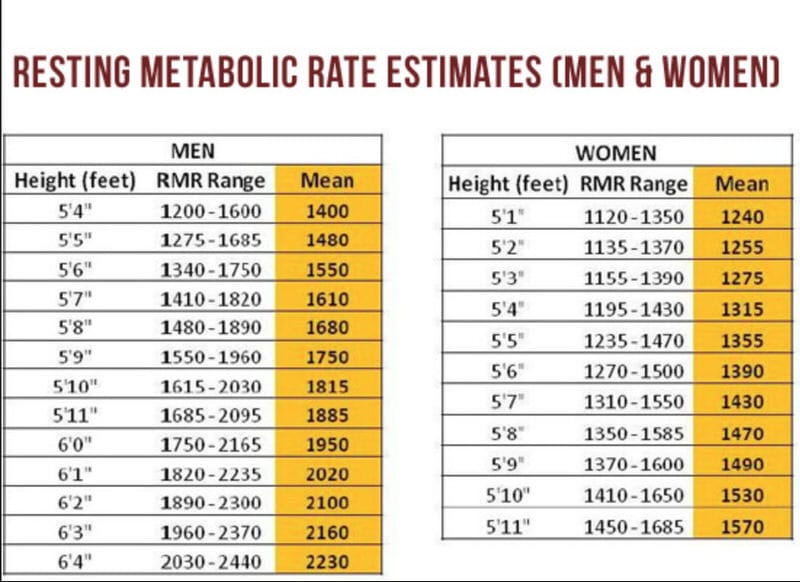
TO KNOW MORE ABOUT YOUR HEALTH: /https://fitpiq.com/what-chronic-obesity-can-do-to-you-why-reaching-a-higher-bmi-can-be-dangerous-to-your-health/
PROTEIN:
Proteins are made up of amino acids. There are 20 essential amino acids our body uses to prepare proteins, such as muscle and bone, and other compounds such as enzymes and hormones. it can also use them as an energy source.
it is an important part of healthy life.
our body uses amino acids to repair muscle and bones and to make hormones and enzymes. and it can also be used as an energy source.


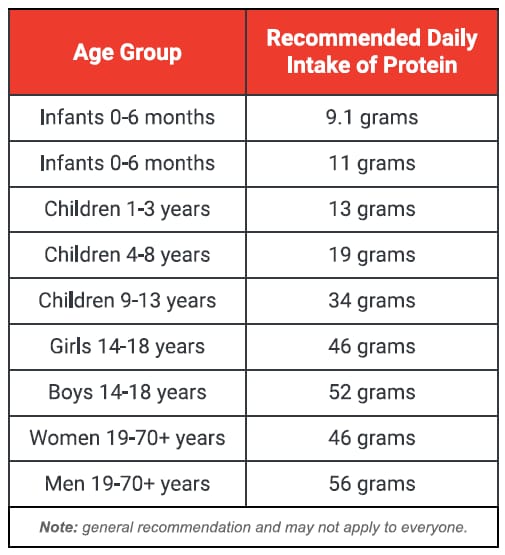

BONE MASS FOR HOW TO READ YOUR OWN BODY COMPOSITION REPORT:
Bone strength is determined by bone size and volumetric bone mineral density (BMD), which together make up bone mass. Peak bone mass is achieved during early adulthood and is influenced by the amount of bone mass accumulated during skeletal growth and development. Having a higher peak bone mass can help offset the natural bone loss that occurs with ageing, menopause, and certain chronic diseases in adulthood.
-bone mass accrual during childhood and adolescence has important implications for lifelong bone health.


OBESITY:
Having an abnormal or excessive fat accumulation that poses a risk to health is known as overweight or obesity. A body mass index (BMI) exceeding 25 is deemed overweight, while over 30 is considered obese. This problem has become an epidemic, with more than 4 million individuals dying each year due to being overweight or obese in 2017, as reported by the global burden of disease.
The number of people who are overweight or obese is increasing, both in adults and children. Between 1975 and 2016, the percentage of children and teenagers aged 5-19 who were overweight or obese worldwide increased by over four times, from 4% to 18%.



BODY AGE:
Body age is a lifestyle measurement that compares your physical health to that of your surrounding population. Tests for body age typically consider various factors, such as your diet, exercise routine, drinking and smoking habits. Some tests may even inquire about your pet ownership and social health.
HOW CAN I LOWER MY BODY AGE:
- EAT HEALTHIER
- EXERCISE REGULARLY
- LOOK AFTER YOUR MENTAL HEALTH
- ESTABLISH AND STAY CONNECTED WITH YOUR SOCIAL CIRCLE
- GET A PET OR HANG OUT WITH SOMEONE ELSE’S
- VISIT A COUNSELLOR, therapist or psychologist
Calculating your body age can be a way to learn whether or not you’re living a healthy, more youthful life, but it is not an exact, scientifically accurate gauge and shouldn’t replace professional diagnosis. It’s easy to calculate your real age, also known as your “chronological age,” but getting a number for your biological age involves going through a list of physical tests and assessing your current lifestyle. The number you get can tell you a lot about your health habits and can be helpful in figuring out how to make changes in your life, especially if you want your biological age to go down as your chronological age goes up!
LBM:
Lean body mass (LBM) refers to the weight of all organs and tissues in the body except for body fat. It is calculated by subtracting body fat weight from total body weight. This includes bones, muscles, blood, skin, and other components.
Typically, the percentage of lean body mass (LBM) is not calculated, but it usually makes up 60-90% of an individual’s total body weight. Generally, men have a higher percentage of LBM compared to women. The dosage of certain anaesthetic agents, specifically those that dissolve in water, is typically based on a person’s LBM. Additionally, some medical examinations also utilize LBM values. LBM. Additionally, some medical examinations also utilize LBM values.

Lean body mass refers to the total mass of bones, muscles, water, ligaments, tendons, and internal organs in the body. Essential fat is present in internal organs, and its mass is included when calculating lean body mass. However, the subcutaneous fat surrounding internal organs is not included in the measurement of lean body mass.
To calculate fat-free mass, you subtract all fat mass (including essential fat) from total body mass. This results in the difference between fat-free mass and lean body mass. By subtracting essential fat from lean body mass, you can determine fat-free mass. On average, women tend to have a 5-12% gap between their lean body mass and fat-free mass, whereas men typically have a 2-3% difference.
Lean Body Mass Formulas for Adults:
The Boer Formula:1
| For males: |
| eLBM = 0.407W + 0.267H – 19.2 |
| For females: |
| eLBM = 0.252W + 0.473H – 48.3 |
The James Formula:2
| For males: |
| eLBM = 1.1W – 128(WH)2 |
| For females: |
| eLBM = 1.07W – 148(WH)2 |
The Hume Formula:3
| For males: |
| eLBM = 0.32810W + 0.33929H – 29.5336 |
| For females: |
| eLBM = 0.29569W + 0.41813H – 43.2933 |
Lean Body Mass Formula for Children
The Peters Formula:4
The author suggests that this formula is applicable to children aged 13-14 years old or younger. The formula is used to compute an eLBM based on an estimated extracellular volume (ECV) as follows:
| eECV = 0.0215·W0.6469·H0.7236 |
| eLBM = 3.8·eECV |
In the formulas above, W is the body weight in kilograms and H is the body height in centimeters.
AFTER KNOWING ALL THE CATEGORIES OF BODY COMPOSITION AND HEALTHY VALUE YOU CAN READ YOUR BODY COMPOSITION REPORT EASILY AND I HOPE SOO IT’S HELPFUL FOR YOU FOR MORE ON THIS TYPE OF CONTENT COMMENT US WHAT TYPE OF ARTICLES YOU WANT OR NEED WE WILL DEFINITELY COME UP WITH THAT.

now try to check your body composition report…it will definitely help you.


